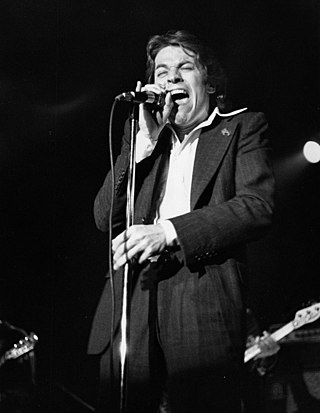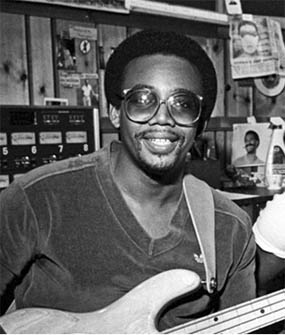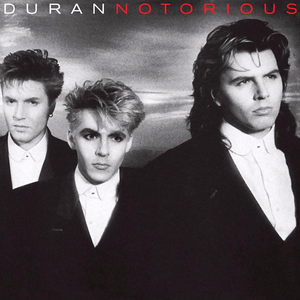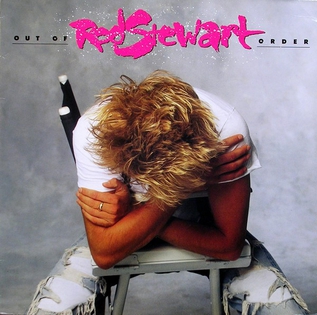
Duran Duran are an English pop rock band formed in Birmingham in 1978 by singer Stephen Duffy, keyboardist Nick Rhodes and guitarist/bassist John Taylor. With the addition of bassist Simon Colley and drummer Roger Taylor the following year, the band went through numerous personnel changes before May 1980, when they settled on their most famous line-up by adding guitarist Andy Taylor and lead vocalist Simon Le Bon.

Nile Gregory Rodgers Jr. is an American record producer, guitarist, composer, and philanthropist. The co-founder of Chic, he has written, produced, and performed on records that have sold more than 500 million albums and 75 million singles worldwide.

Nigel John Taylor is a British musician who is best known as the bass guitarist for new wave band Duran Duran, of which he was a founding member. Duran Duran was one of the most popular bands in the world during the 1980s due in part to their music videos which played in heavy rotation in the early days of MTV. Taylor played with Duran Duran from its founding in 1978 until 1997, when he left to pursue a solo recording and film career. He recorded a dozen solo releases through his private record label B5 Records over the next four years, had a lead role in the movie Sugar Town, and made appearances in a half dozen other film projects. He rejoined Duran Duran for a reunion of the original five members in 2001 and has remained with the group since.
Arcadia were a British pop group formed in 1985 by Simon Le Bon, Nick Rhodes, and Roger Taylor of Duran Duran as a side project during a break in the band's schedule. The project was active only during 1985 and 1986 and for just one album, So Red the Rose, which was certified Platinum in the United States and included the singles "Election Day", "Goodbye Is Forever", "The Flame", and "The Promise". Drummer Roger Taylor appeared in only a few band photographs and one music video, and stated he was to be involved only in the recording side of the project.
Anthony Terrence Thompson was an American session drummer best known as the drummer of the Power Station and a member of Chic.

Robert Allen Palmer was an English singer and songwriter. He was known for his powerful, soulful voice and sartorial elegance, and his stylistic explorations, combining soul, funk, jazz, rock, pop, reggae, and blues. Over his four-decade career, Palmer is perhaps best known for the song "Addicted to Love" and its accompanying video, which came to "epitomise the glamour and excesses of the 1980s".

Bernard Edwards was an American bass player and record producer, known primarily for his work in disco music with guitarist Nile Rodgers, with whom he co-founded Chic. In 2017, Edwards was selected as the 53rd greatest bassist of all time by Bass Player magazine.

Missing Persons is an American rock band founded in 1980 in Los Angeles by guitarist Warren Cuccurullo, vocalist Dale Bozzio, and drummer Terry Bozzio. They later added bassist Patrick O'Hearn and keyboardist Chuck Wild. Dale's quirky voice and heavy makeup made the band a favorite on MTV in the early 1980s.

Andrew James Taylor is an English guitarist, best known as a former member of Duran Duran and the Power Station. He has also recorded and performed as a solo artist, and served as a guitarist, songwriter, and record producer for the likes of Robert Palmer, Rod Stewart, the Almighty, Thunder, Love and Money, Mark Shaw, Then Jerico, C. C. Catch, Paul Rodgers, Belinda Carlisle, and Gun.

Power Station at BerkleeNYC is a recording studio at 441 West 53rd Street in the Hell's Kitchen neighborhood of Midtown Manhattan in New York City. It was originally founded in 1977 as Power Station and known as Avatar Studios from 1996 to 2017. Renowned for its exceptional acoustics, the studio has been the site of hundreds of gold, platinum, and Grammy Award-winning recordings.

Notorious is the fourth studio album by English rock band Duran Duran, released on 18 November 1986 by EMI Records. Produced by the band with Nile Rodgers, its musical style differed from the band's previous albums with a funk rock sound. It is the first album to feature the band as a trio with singer Simon Le Bon, keyboardist Nick Rhodes and bassist John Taylor as drummer Roger Taylor and guitarist Andy Taylor both left by the time the album was released. Andy Taylor would later be replaced by former Missing Persons guitarist Warren Curcurullo, who completed recording parts of the album in addition to Rodgers and session drummer Steve Ferrone.

Riptide is the eighth studio album by English singer Robert Palmer, released in November 1985 by Island Records. The album was recorded over a period of three months in 1985 at Compass Point Studios in Nassau, Bahamas. The album peaked at No. 5 on the UK Albums Chart and at No. 8 on the US Billboard 200. It was certified double Platinum in the US by the RIAA in March 1996 and certified Gold in the UK by BPI in August 1986. It features the songs "Addicted to Love", "I Didn't Mean to Turn You On", "Hyperactive", "Discipline of Love", and "Riptide" which were all released as singles. The single "Addicted to Love" was accompanied by an iconic and much-imitated music video, directed by Terence Donovan, in which Palmer is surrounded by a bevy of near-identically clad, heavily made-up female "musicians," either mimicking or mocking the painting style of Patrick Nagel. In September 1986, Palmer performed "Addicted to Love" at the 1986 MTV Video Music Awards in Los Angeles, California. In 1987, he won the Grammy Award for Best Male Rock Vocal Performance for "Addicted to Love". At the 1987 Brit Awards, Palmer received his first nomination for Best British Male.

The Power Station is the debut album by supergroup the Power Station, released in 1985 on Capitol Records. The album peaked at No. 6 on the US Billboard 200 and No. 12 on the UK Albums Chart. All three singles released from the album were Top 40 hits in the United States. An anniversary edition was released 21 February 2005, featuring 7 bonus tracks, as well as a 35-minute DVD.

"Addicted to Love" is a song by English rock singer Robert Palmer released in 1986. It is the third song on Palmer's eighth studio album Riptide (1985) and was released as its second single. The single version is a shorter edit of the full-length album version.

"A View to a Kill" is a song by English rock band Duran Duran, released on 6 May 1985. Written and recorded as the theme for the James Bond film of the same name, it became one of the band's biggest hits. It is the only James Bond theme song to have reached number one on the US Billboard Hot 100; it also made it to number two for three weeks on the UK Singles Chart while stuck behind Paul Hardcastle's "19". The song was the last track recorded by the most famous five-member lineup of Duran Duran until their reunion in 2001 and was also performed by the band at Live Aid in Philadelphia, their final performance together before their first split.

Out of Order is the fifteenth studio album by Rod Stewart, released in 1988. It features the hit singles "Lost in You", "Forever Young", "My Heart Can't Tell You No", and "Crazy About Her". The album was produced by Stewart and members of The Power Station: guitarist Andy Taylor, and bassist Bernard Edwards. Chic drummer Tony Thompson also plays on the record.

Chic, currently called Nile Rodgers & Chic, is an American disco band that was formed in 1972 by guitarist Nile Rodgers and bassist Bernard Edwards. It recorded many commercially successful disco songs, including "Dance, Dance, Dance " (1977), "Everybody Dance" (1977), "Le Freak" (1978), "I Want Your Love" (1978), "Good Times" (1979), and "My Forbidden Lover" (1979). The group regarded themselves as a rock band for the disco movement "that made good on hippie peace, love and freedom". In 2017, Chic was nominated for induction into the Rock and Roll Hall of Fame for the eleventh time.

Living in Fear is the second and final studio album by the supergroup the Power Station, released in 1996.

"Some Like It Hot" is a song by British-American band the Power Station. It was the first single released from the group's 1985 eponymous debut album. Released by Parlophone in 1985, the song features loud, prominent drum beats from Tony Thompson and lead vocals from Robert Palmer. The video featured model Caroline Cossey. It was the band's biggest hit, peaking at number six on the US Billboard Hot 100 chart and number four in Australia.
Distance was a late-1980s rock/funk band led by bassist/producer Bernard Edwards, patterned after the Power Station. The band was composed of former Chic and the Power Station members Edwards (bass) and Tony Thompson (drums) with future Bad Company member Robert Hart on lead vocals, and noted session musicians Eddie Martinez on guitar and Jeff Bova on keyboards.
















